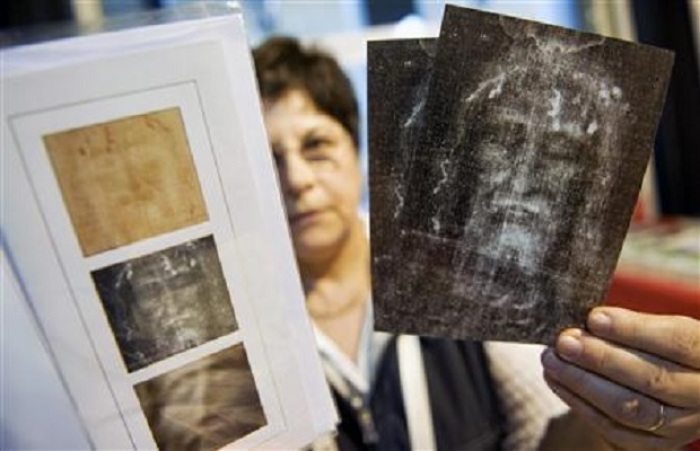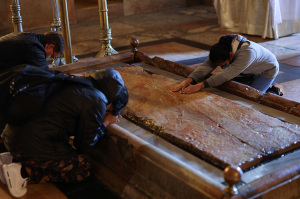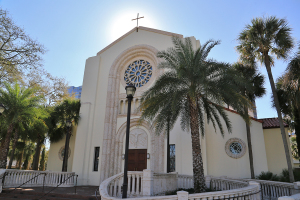Shroud of Turin Has Blood of Torture Victim, Possibly Jesus Christ, New Research Discovers

Researchers in Italy analyzing the world-famous Shroud of Turn, which some believe to be the burial cloth of Jesus Christ, have discovered that the relic carries the blood of a torture victim.
Elvio Carlino, a researcher at the Institute of Crystallography, said last week in an article for Catholic News Agency that the small particles analyzed "have recorded a scenario of great suffering, whose victim was wrapped up in the funeral cloth."
The nanoparticles in question have a peculiar structure, size and distribution, which are not typical of the blood of a healthy person.
The particles showed high levels of substances called creatinine and ferritin, which are found in patients who have suffered multiple traumas like torture.
"Hence, the presence of these biological nanoparticles found during our experiments point to a violent death for the man wrapped in the Turin Shroud," University of Padua professor Giulio Fanti said.
The findings from the research were published on June 30 in the U.S. scientific journal PlosOne. The article is titled "New Biological Evidence from Atomic Resolution Studies on the Turin Shroud."
The article points out that some believe the shroud to be "the burial cloth in which Jesus of Nazareth was wrapped about 2,000 years ago," while others have claimed it is a forgery.
The researchers say that there is no evidence so far to suggest that the shroud is a fake.
The 14-foot-long relic has gone through several tests to determine its authenticity, including radiocarbon measurements in 1988, which led to conclusions that it was likely manufactured somewhere between 1260–1390 A.D.
As the PlosOne article noted, however, further research has found that the fibers tested at the time were from a later patch in the shroud, and were not part of the original cloth.
Further tests in 2015 presented a new mystery, with researchers sequencing the DNA of pollen and other dust particles from the cloth, finding evidence of plants from South America, the Middle East, Central Africa, Central Asia, China, and other regions.
As Real Clear Science reported at the time:
"According to legend, the shroud moved around quite a bit, from Jerusalem to Turkey to France and to its final resting place in Turin, Italy. The DNA evidence confirms that many different people, from many different places, got their hands on or near the shroud."
Oxford University geneticist George Busby and biblical scholar Pastor Joe Basile revealed in April on the History Channel that DNA samples from the shroud will be used to search for any living descendants of Jesus Christ's family.
"They believe that if they can find a strand of Jesus' DNA it could help identify who among us today are descendants of Jesus and provide us with new insight into the man many consider to be the most important person in history, Jesus," the History Channel explained about the search at the time.




























